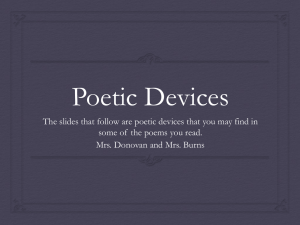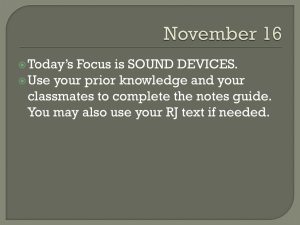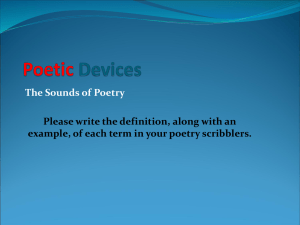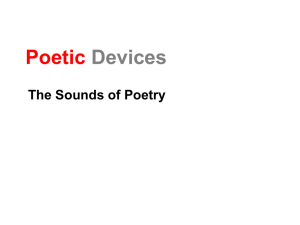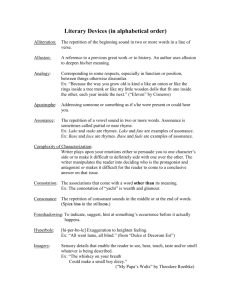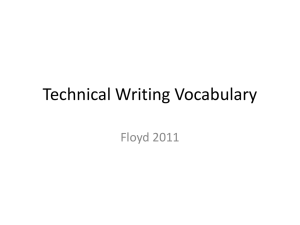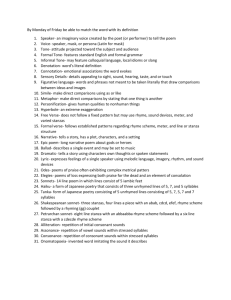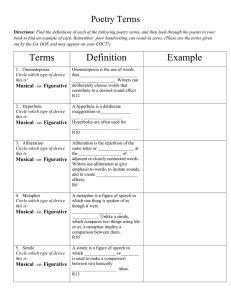Review of Poetic Devices
advertisement
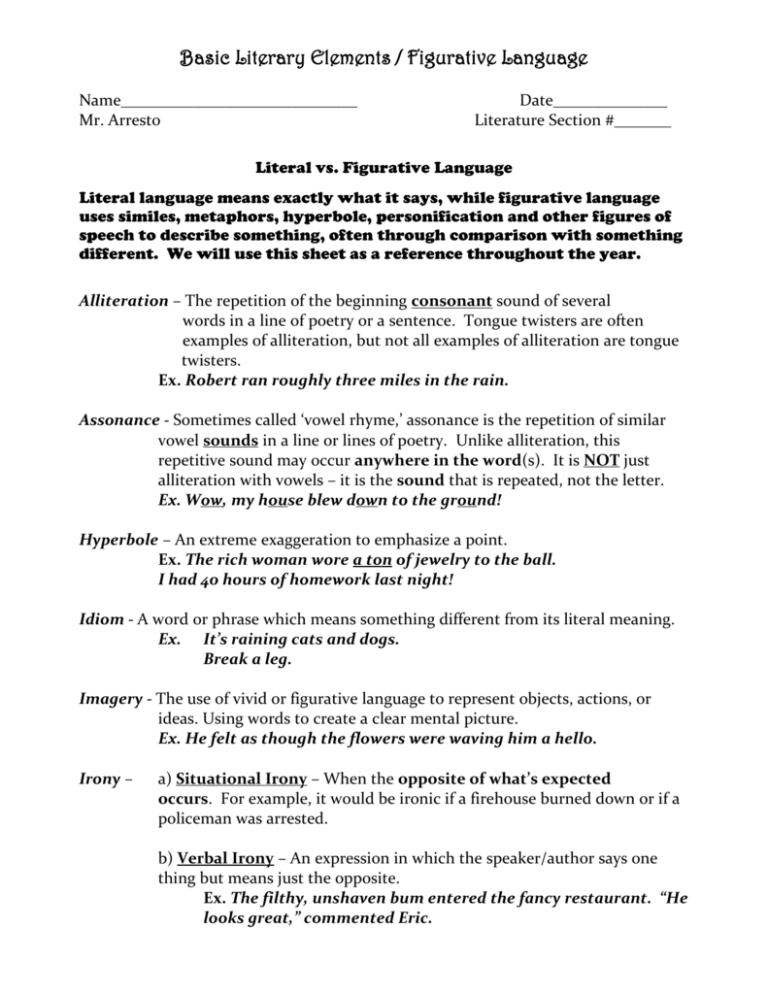
Basic Literary Elements / Figurative Language Name_____________________________ Mr. Arresto Date______________ Literature Section #_______ Literal vs. Figurative Language Literal language means exactly what it says, while figurative language uses similes, metaphors, hyperbole, personification and other figures of speech to describe something, often through comparison with something different. We will use this sheet as a reference throughout the year. Alliteration – The repetition of the beginning consonant sound of several words in a line of poetry or a sentence. Tongue twisters are often examples of alliteration, but not all examples of alliteration are tongue twisters. Ex. Robert ran roughly three miles in the rain. Assonance - Sometimes called ‘vowel rhyme,’ assonance is the repetition of similar vowel sounds in a line or lines of poetry. Unlike alliteration, this repetitive sound may occur anywhere in the word(s). It is NOT just alliteration with vowels – it is the sound that is repeated, not the letter. Ex. Wow, my house blew down to the ground! Hyperbole – An extreme exaggeration to emphasize a point. Ex. The rich woman wore a ton of jewelry to the ball. I had 40 hours of homework last night! Idiom - A word or phrase which means something different from its literal meaning. Ex. It’s raining cats and dogs. Break a leg. Imagery - The use of vivid or figurative language to represent objects, actions, or ideas. Using words to create a clear mental picture. Ex. He felt as though the flowers were waving him a hello. Irony – a) Situational Irony – When the opposite of what’s expected occurs. For example, it would be ironic if a firehouse burned down or if a policeman was arrested. b) Verbal Irony – An expression in which the speaker/author says one thing but means just the opposite. Ex. The filthy, unshaven bum entered the fancy restaurant. “He looks great,” commented Eric. Basic Literary Elements / Figurative Language Metaphor – Figure of speech that compares two unlike things without using like or as. Ex. Frank is a bull on the football field. Janie is a doll. Onomatopoeia – Using words to imitate sounds. Ex. BAM! The door slammed with a thud. Bzzzzzzzzz. Moo. Meow. Arf! Personification – Giving human qualities to inanimate objects. Ex. The dish ran away with the spoon. The stars danced playfully in the moonlit sky. Rhyme – When words have the same end sounds. Ex. Ouch, Grouch, Couch, and Pouch all rhyme with each other. “Snug as a bug in a rug” contains three words which rhyme. Rhyme Scheme - The sequence in which the rhyme occurs in a poem. The first end sound is represented as the letter "a," the second is "b," etc. The rhyme scheme continues throughout the entire poem; it does not “reset” for each stanza. Ex. Grand Avenue might have crowded halls, And a putrid color on the walls, But when compared with all the rest, No one denies that we’re the best! Simile – A A B B Figure of speech that compares two unlike things using like or as. Ex. Frank is as aggressive as a bull on the field. Frank is like a bull on the field. Stanza – A set of lines in a poem set apart from other sets of lines by space (also known as a verse). Basically, the paragraphs of poetry. Ex. Roses are red Violets are blue Garbage smells funny And so do you. Stanza 1 Stanza 2 Symbol – When something (usu. an object) represents something else (usu. an idea). Ex. The American Flag represents (or symbolizes) freedom. The color white represents purity, peace, and innocence.

